Although we have seen the popularity of coworking spaces increase in recent years, you may be surprised to know that they have actually been around for over 100 years. Frank Lloyd Wright designed his first open-plan working space back in 1903. He designed the space for Larkin Administration in Buffalo, New York.
Over the next 100 years, office space changed massively following trends and adapting to the needs of working. We have seen everything from minimal beige cubicles, to bright open spaces and everything in between. That said, throughout most of this, the working day stayed the same for most workers. No matter what type of office they worked in, they would arrive first thing and begin their working day. They would be required to stay for around 8 hours and then leave to go home. This soon became tiring and people started to demand more from their workday – wanting flexibility and more resources from their employer within their workspace, which started a trend of employers considering what they were offering and how they could improve this.
Coworking changed much of this, especially over recent years. Nowadays, many workers work from an office that doesn’t belong to their employers, at relatively flexible hours. So, you can sit at whichever desk you like, work alongside other team members – or even other companies - and often change your starting and finishing times to suit you.
This set-up has shown to boost employee happiness, increase productivity, and improve the work environment. Should this continue, it looks like coworking may well be the way most offices opt to use their space in the future. We thought we would investigate how coworking started, what has changed since and how that has led us to where we are today.
Life Before Coworking: The 1980s
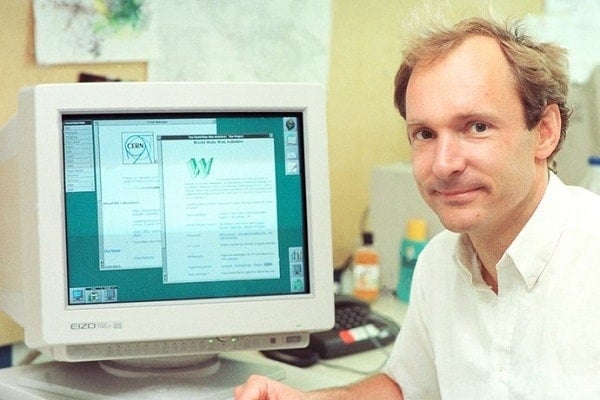
We saw lots of technological advancements in the 1980s including the first mobile phones being released.
It was in the 1980s that the first ideas of coworking spaces started to become more popular. There were different reasons that caused this, but Mark Dixon setting up a serviced office company was a catalyst for change. He launched Regus with the idea of offering flexible office solutions to workers who were travelling for work. He set these up as managed offices and some of the features they had we have seen emerge into the coworking spaces many of us are used to seeing today.
At the start of the 1980s, we hit a worldwide recession and as a result, many companies looked at ways to reduce costs – with flexible office spaces being a solution for many of them. Then a few years later the World Wide Web was invented by Tim Berners-Lee. This resulted in the ability to access office files and resources remotely, which prompted employers to consider working remotely.
Trying New Things: The 1990s
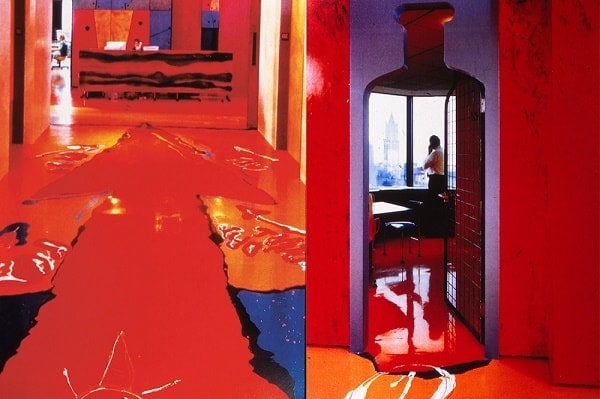
The 1990s was an interesting time for working environments, with many companies trying new things in order to be different from the rest.
1994 - Chiat/Day, an American advertising agency, worked with Gaetano Pesce to redesign their office space in New York. Their instructions were to break workplace traditions. They wanted to promote a space where people were encouraged to work together – this meant no desks, no personal equipment and no real office space. It was intended that those working on different projects could sit together and collaborate on ideas. It proved popular at the start with some creative success, but it led some employees to complain that they were unable to focus on their own task at hand.
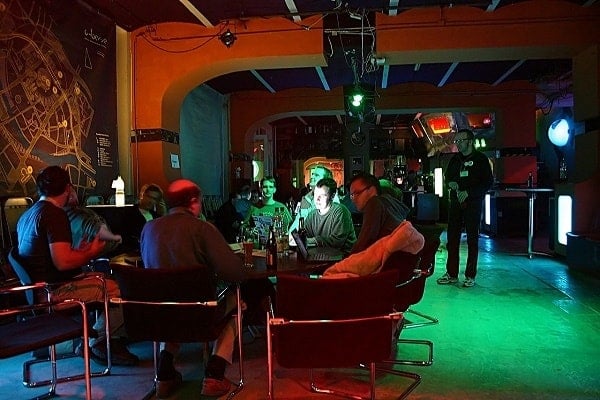
1995 - The next year saw a group of computer engineers launch a coworking space in Germany. The Berlin-based space, C-Base, was launched as a ‘hackerspace'. The idea behind this was for computer enthusiasts to come together to share their expertise, ideas and equipment. The need for computer engineers to have a fixed place of work was dwindling, so C-Base was designed to allow them to work alongside others in their field.
1999 - Bernard DeKoven came up with the phrase ‘coworking’. Although DeKoven’s idea of coworking is different from today’s concept; He saw coworking as people working together and collaborating on projects “as equals”.
In the same year, New York saw the opening of 42 West 42 – a software company allowing short term renting of office space alongside a truly magnificent working environment. The office space proved popular and is linked to being one of the reasons flexible office space took off in such a way. At the time, the space just offered somewhere to work and didn’t promote networking or any events, which is something we would see change over the years with future flexible office spaces on offer.
Coworking Spaces Start To Take Off: The 2000s
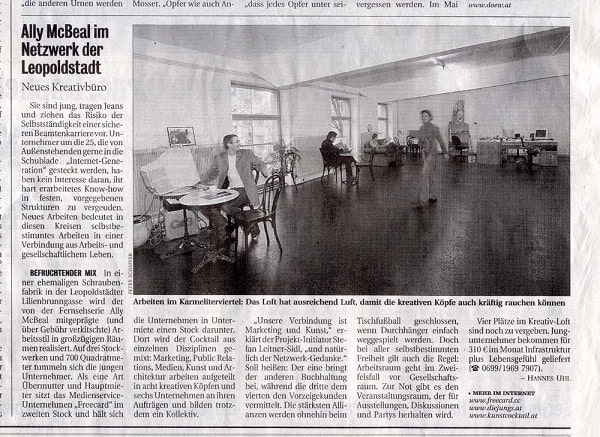
The 2000s saw lots of changes when it comes to coworking and flexible office spaces. It was during these years that the trend for using such spaces really started to take off.
2002 - In Austria, ‘Schraubenfabrik’ was opened by a pair of Austrian entrepreneurs as an ‘entrepreneurial centre’. It was launched with the idea that people could use this space as an alternative to working from home. It allows them to collaborate with other people who also used the space, including PR consultants, freelancers and architects. It may not have been officially known as a coworking space, but it is certainly something that led onto the coworking space that we know today.
In 2002 the first coffee shop workspace opened in Denmark. LYNfabriikken combined office space with a coffee shop, which inspired people to think about new ways of working productively.
2003 - A year later, Brad Neuberg launched the Nine to Five Group. The idea behind this was that freelancers and self-employed workers could arrange ways to meet up and work together, to compensate for the feeling of community that many lone workers felt. He did all of his advertising on Craigslist, but the group failed to take off.
2004 - The original ‘entrepreneurial centre’, Schraubenfabrik, open their second working space – Hutfabrik (Hat Factory). Operated under Konnex Communities, these spaces became the first ever coworking space network, a big concept of coworking to come.
2004 - The Gate 3 Work Club opens in California. Launched in October by Neil Goldberg, the idea was to reduce isolation in the modern working world. It was designed to improve productivity and increase happiness. It was a large space, around 14,000sq ft. and had a range of spaces people could use – private spaces, collaborative areas and quiet zones. It had a café, comfortable furniture, and access to high-quality technology. Despite having all the things we would look for in today’s flexible office spaces it only remained open a year before it had to be closed down.
2005 - The 2000s saw internet usage and personal computers becoming much more mainstream. In 2005, Apple announced they were selling more laptops than desktops, something that definitely paved the way to more flexible working.

In August 2005, the first official coworking space was opened by Brad Neuberg. San Francisco Coworking Space was designed to give people the flexibility of working on their own, with the structure of an actual workplace. It was hosted in the Spiral Muse building in the Mission area of San Francisco and in the first month, there were no attendees. This cost Neuberg $300 as he still had to pay the monthly rent. He continued to outreach to businesspeople and soon after Ray Baxter, a start-up developer, becomes a member – making him the world’s first-ever official co-worker.
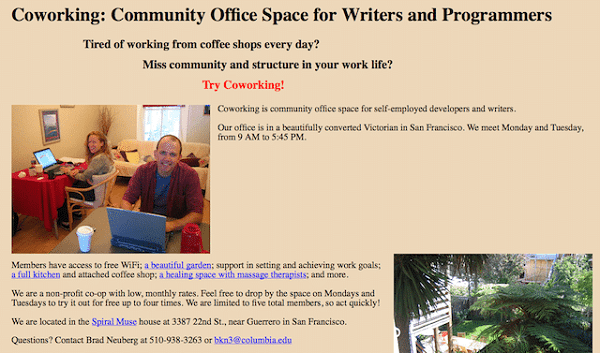
In September 2005, a café offering free internet access opens in Berlin. Although St. Oberholz isn’t officially billed a coworking space, it is so different from a traditional café that it was referred to as such by people who used it. It set the scene for the many internet cafés that we are so used to seeing today.
In the same year, a class of students return to Britain after visiting Johannesburg. They talk of the power they had seen behind community work whilst on their trip to the town of Soweto. The town itself had worked together to transform an area in the middle of town from a wasteland into an area of displaying art, hosting playground for children and very many gardens. Feeling inspired, the students launched The Hub in Islington, North London, with the aim of inspiriting social innovation in the local area, similar to the one that had come across during their visit to Johannesburg.
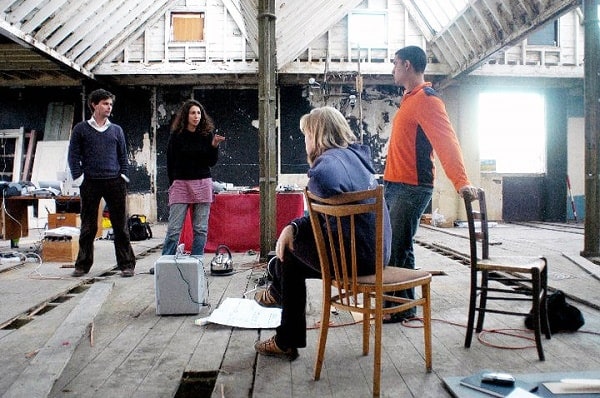
2006 - The San Francisco Coworking Space closes after a year. Not put off by this, Neuberg teams up with a group of people to launch a new coworking space - The Hat Factory. Later that year, two of the people involved in that project (Tara Hunt and Chris Messina) launch another coworking space in the same area – Citizen Space. It is not only in San Francisco that coworking spaces are starting to become more popular, as by this time there are around 30 coworking and flexible office spaces around the world.
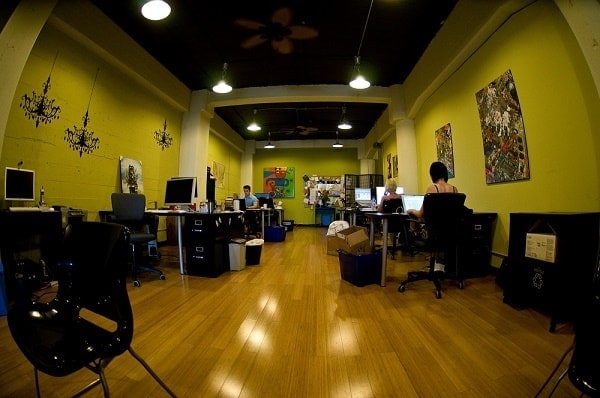
Social Media Becoming More Popular
We know that during this time social media started to become more popular, with sites such as Myspace and Bebo leading the way to the social media networks we’re used to using today.
2006 - Chris Messina (the creator of hashtags on Twitter) launches a resource called The Coworking Wiki. It is designed to help people who wish to co-work network with others and find new coworking spaces to visit – as well as letting new coworking spaces promote the space they have available.
For the 7 years following, the number of coworking spaces and the amount of people using them doubles year-on-year. This phase became known as the Coworking Revolution.
2007 - Thanks to the growing trend of using, creating and looking for coworking spaces, in 2007 the term ‘coworking’ starts to trend on the search engine Google.
In the same year, the first coworking space launched in Germany. The Business Class Net opened in Berlin, taking up space in a former art exhibition studio. It is now known as one of the first worldwide coworking spaces.
In Philadelphia, they also used the bootstrapping method to create a coworking space. A group of 30 people got together to pay memberships in advance to help launch this space. Even today, IndyHall is known as a revolutionary flexible working option in Philadelphia.
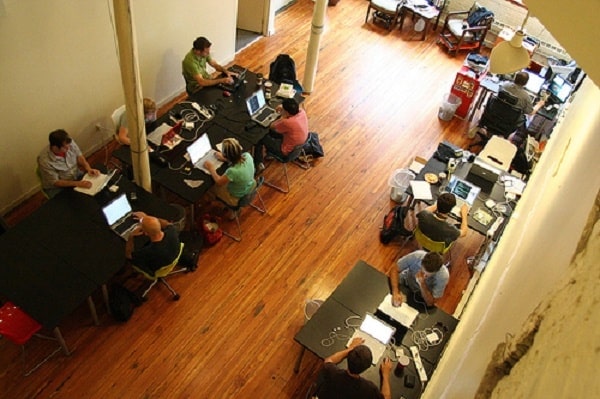
Around this same time, coworking spaces throughout Europe have started to arise, including Citizen Space in Switzerland, La Boate in Marseilles, and the Gracia WorkCentre in Barcelona. Gracia Workcenter in Barcelona became Spain’s first coworking centre after the founder Cristina discovered the concept while in San Francisco. The popularity continued to grow and in 2007, coworking got its own Wikipedia page.
The mobile phones revolution allowed people to take advantage of Wi-Fi hotspots anywhere they go. This led to people realising that the opportunity to work from anywhere was a reality for many, massively changing the way people saw workspaces.
2008 - The popularity of coworking spaces meant that many businesses saw the need to adapt and stay ahead of the competition. This led to Cubes & Crayons launching in San Francisco – a coworking space which offered childcare in their membership packages. Although this particular space only survived a few years, it certainly started a trend of workplaces trying to offer more flexible options to the people who work there.
In 2008, ‘coworking visas’ were also introduced, giving coworking members free access to other coworking spaces as part of their contract. This allowed frequent travellers to work from coworking offices around the world without having to spend any more money.
By 2008 there are over 160 coworking spaces open worldwide including The Hub, opened by students in London which now operates nine hubs across three different continents.
2009 - People started to pay attention to coworking spaces and what this meant for working life. Drew Jones Todd Sunstead and Tony Bacigalupo released their book – “I’m Outta Here. How coworking is making the office obsolete”.
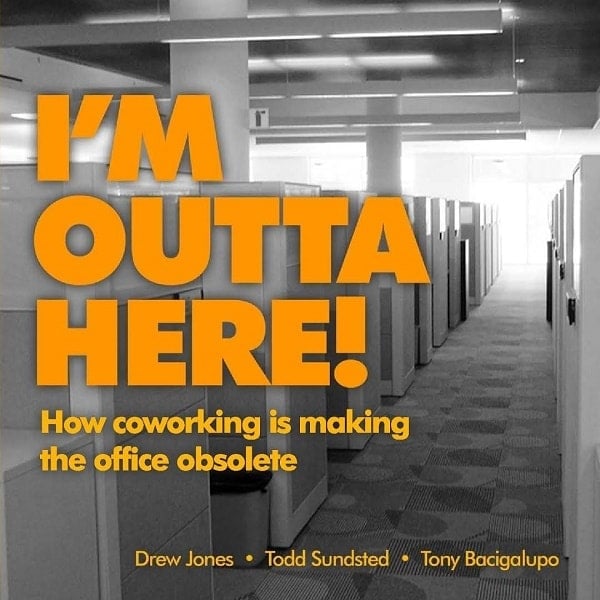
Coworking Becomes Big Business: The 2010s
2010 - WeWork are a name that lots of us are familiar with, and it was in 2010 that they launched their first location. This followed the eco-friendly workspace previously run by Adam Neumann and Miguel McKelvey.
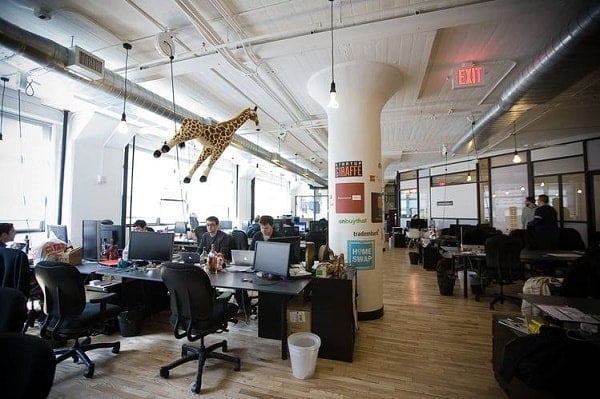
The same year saw Deskmag release its first issue – an online magazine dedicated to coworking. It was launched in July by a Berlin-based company and covered a range of coworking topics including articles about the function, design and development of coworking spaces. By this time there are thought to be over 600 coworking spaces across the group and a number of meet-ups start to happen between coworking enthusiasts.
Loosecubes saw the popularity of these meet-ups and in 2010 launched their own event alongside Link Coworking’s Liz Elam. Attended by 120 people all enthusiastic about coworking, it proved very popular for the first event. Liz then started the Global Coworking Unconference Conference (GCUC) which started in 2011 and today is an event that is attended by thousands of people each year.
2011 - The first coworking space to be funded by angel funding opens. NextSpace is based in California and they raise £326,500 ($425,000) to launch. It is this first investment by investors into such a project that starts to raise the profile of coworking as viable investment ideas.
2011 was also a big year for coworking politics as Simon Kowalewski, owner of Yorck52 (a Berlin-based co-working company) is voted into parliament, as part of the Pirate Party.

2012 - Japan hosts its first coworking conference on June 16th. By the time the conference was held in 2012, the country had over 70 coworking spaces, a big step up from 5 spaces held the previous year. It is this event that starts to kick off the popularity of coworking spaces across the rest of Asia.
In the same year #Coworking is used 93,000 times on Twitter – double the number the year before. Coworking as a word is used in 217,000 in tweets that year alone, mimicking the popularity of coworking spaces opening across the globe, with 2,150 spaces offering coworking now open.
2013 - Coworking companies are starting to expand. There are now nine coworking companies that have at least 5 separate coworking spaces on offer. It is this consistent increase in popularity that prompts the launch of the world’s first Coworking Health Insurance Plan - a health insurance plan first offered to Coworking Ontario members. It is offered to freelancers in coworking spaces to give them the chance of health insurance benefits.
2014 – Coworking spaces jump to 5,780 venues worldwide with 295,000 members, in comparison to 3,400 coworking spaces with 151,000 members in 2013.
2015 - The Wikipedia article continues to be popular, with the article being translated into 23 languages.
In the same year, Regus have 2,768 flexible office locations, and they take over Spaces, a coworking company from Holland.
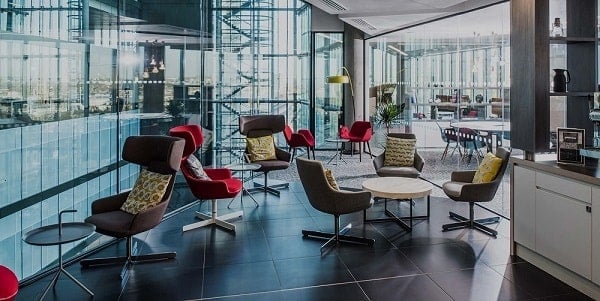
Large Companies Start To Take Notice
2016 - By September 2016, larger companies are starting to consider coworking options more seriously. HSBC move into a coworking space taking 300 of their staff members with them. KPMG also follows this by sending staff in New York and London to use coworking space. In recent years, Microsoft and IMB have also taken steps to allow some of their team members to work from flexible working spaces.
In 2016, there are 12,100 worldwide coworking spaces, and by 2017 there are over 1 million co-workers worldwide.
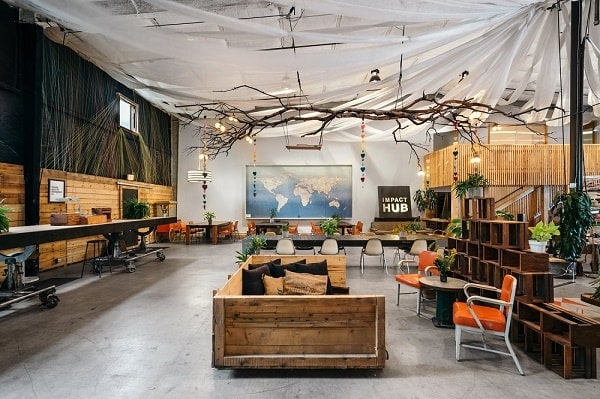 2018 - The Hub, started in London by a group of students following a visit to Johannesburg, is now known as Impact Hub. It is in operation across 50 countries and 5 continents, with a total of 100 locations to its name. In this same year, some coworking spaces embrace cryptocurrency and start to accept this as payment.
2018 - The Hub, started in London by a group of students following a visit to Johannesburg, is now known as Impact Hub. It is in operation across 50 countries and 5 continents, with a total of 100 locations to its name. In this same year, some coworking spaces embrace cryptocurrency and start to accept this as payment.
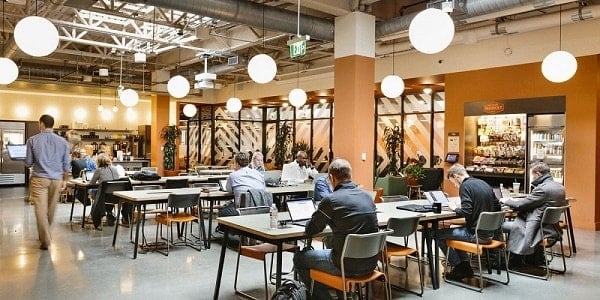
In the same year, WeWork opened its 50th NYC location – making it the 2nd biggest Manhattan office tenant. It is expected that they will soon overtake JP Morgan Chase, by adding 750,000sq.ft of office space to its books. The company is now worth around £15 billion – with locations across 80 cities made up of 250,000 members and 421 offices.
Despite WeWork having such a presence in New York, it is London that is considered top of coworking spaces – with more spaces available than Berlin, San Francisco and New York. Around 10.7 million sq. ft. of office space throughout central London is thought to be taken up by coworking spaces.
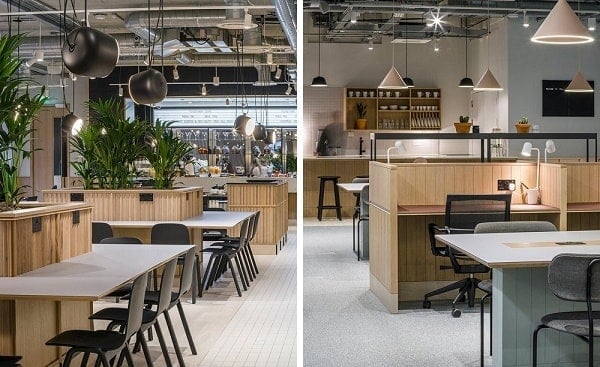
What Does The Future Hold?
We know that coworking has grown massively since its launch and with wireless capabilities and devices improving all the time, this trend is likely to continue. It is thought that by 2020 there will be at least 26,000 coworking spaces open worldwide. This may be a slower growth than we have seen previously, but the number of people making use of these coworking spaces is expected to increase massively.
It is expected that by 2020 over 3.8 billion will make use of coworking spaces in some capacity. Coworking spaces are generally becoming bigger so although we may see a slower growth of new buildings opening up, they will be well-placed to cater for the large increase in people interested in using coworking spaces. We are seeing coworking spaces increase in size and their offerings upgrading, meaning they are much more likely to be able to cater to peoples varying needs, as well as increasing numbers of people.
Emergent Research predict that by 2022, over 5 million people will be coworking. Quite an increase from Ray Baxter’s initial coworking start-up all those years ago.
We found this fascinating and as such, the team at FreeOfficeFinder have created this infographic. We aimed to cover everything from the initial coworking start-ups to the experimental phase in the 90s right through to the coworking spaces we see today. Coworking is massively popular and no doubt will continue to do so. The infographic puts all of this in one space and what an interesting journey the world of coworking has been on!








